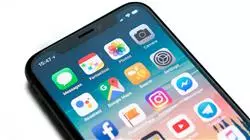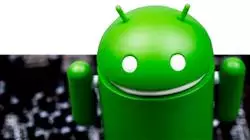University certificate
The world's largest faculty of information technology”
Introduction to the Program
Discover, together with experts, the fundamental aspects of Customer Experience to create Android Apps with a high impact on the market”

Labor market analyses highlight a growing need for professionals specialized in mobile application design, valuing comprehensive experience in the development cycle, deployment and monetization of these solutions. This program, created in collaboration with leading industry experts, focuses on providing computer scientists with solid knowledge in programming languages, with a special focus on Android, architectures and user interfaces.
The participant will develop skills to master different programming languages adapted to each type of device, delving into responsive design to create versatile and efficient apps. In addition, you will explore key areas such as web computing, software, business development, marketing, sales, consulting, multiplatform mobile technology, automotive applications, home automation, IoT, banking and drones.
TECH offers a 100% online methodology, which allows professionals to learn without the need for face-to-face classes or fixed schedules. In 15 months, participants will gain the necessary tools to boost their own business in App development or take on consulting roles in Android-based mobile technology.
Participate in 10 innovative Masterclasses with a leading international expert in Android App Development”
This Advanced master’s degree in Mobile Application Development, Android Expert contains the most complete and up-to-date program on the market. The most important features include:
- The development of case studies presented by experts in Mobile Application Development
- The graphic, schematic, and practical contents with which they are created, provide scientific and practical information on the disciplines that are essential for professional practice
- Practical exercises where the self-assessment process can be carried out to improve learning
- Its special emphasis on innovative methodologies in the management of of mobile application development
- Theoretical lessons, questions to the expert, debate forums on controversial topics, and individual reflection assignments
- Content that is accessible from any fixed or portable device with an Internet connection
Study when and where you want with this 100% online program, with no time or location limits”
It includes in its teaching staff professionals belonging to the field of Mobile Application Development, who pour into this program the experience of their work, in addition to recognized specialists from leading companies and prestigious universities.
The multimedia content, developed with the latest educational technology, will provide the professional with situated and contextual learning, i.e., a simulated environment that will provide an immersive learning experience designed to prepare for real-life situations.
This program is designed around Problem-Based Learning, whereby the student must try to solve the different professional practice situations that arise throughout the program. For this purpose, the professional will be assisted by an innovative interactive video system created by renowned and experienced experts.
Take advantage of TECH's innovative methodology that revolutionizes academic learning"

Reinforce theoretical concepts with the practical resources offered by this program"
Why study at TECH?
TECH is the world’s largest online university. With an impressive catalog of more than 14,000 university programs available in 11 languages, it is positioned as a leader in employability, with a 99% job placement rate. In addition, it relies on an enormous faculty of more than 6,000 professors of the highest international renown.

Study at the world's largest online university and guarantee your professional success. The future starts at TECH”
The world’s best online university according to FORBES
The prestigious Forbes magazine, specialized in business and finance, has highlighted TECH as “the world's best online university” This is what they have recently stated in an article in their digital edition in which they echo the success story of this institution, “thanks to the academic offer it provides, the selection of its teaching staff, and an innovative learning method aimed at educating the professionals of the future”
A revolutionary study method, a cutting-edge faculty and a practical focus: the key to TECH's success.
The most complete study plans on the university scene
TECH offers the most complete study plans on the university scene, with syllabuses that cover fundamental concepts and, at the same time, the main scientific advances in their specific scientific areas. In addition, these programs are continuously being updated to guarantee students the academic vanguard and the most in-demand professional skills. In this way, the university's qualifications provide its graduates with a significant advantage to propel their careers to success.
TECH offers the most comprehensive and intensive study plans on the current university scene.
A world-class teaching staff
TECH's teaching staff is made up of more than 6,000 professors with the highest international recognition. Professors, researchers and top executives of multinational companies, including Isaiah Covington, performance coach of the Boston Celtics; Magda Romanska, principal investigator at Harvard MetaLAB; Ignacio Wistumba, chairman of the department of translational molecular pathology at MD Anderson Cancer Center; and D.W. Pine, creative director of TIME magazine, among others.
Internationally renowned experts, specialized in different branches of Health, Technology, Communication and Business, form part of the TECH faculty.
A unique learning method
TECH is the first university to use Relearning in all its programs. It is the best online learning methodology, accredited with international teaching quality certifications, provided by prestigious educational agencies. In addition, this disruptive educational model is complemented with the “Case Method”, thereby setting up a unique online teaching strategy. Innovative teaching resources are also implemented, including detailed videos, infographics and interactive summaries.
TECH combines Relearning and the Case Method in all its university programs to guarantee excellent theoretical and practical learning, studying whenever and wherever you want.
The world's largest online university
TECH is the world’s largest online university. We are the largest educational institution, with the best and widest online educational catalog, one hundred percent online and covering the vast majority of areas of knowledge. We offer a large selection of our own degrees and accredited online undergraduate and postgraduate degrees. In total, more than 14,000 university degrees, in eleven different languages, make us the largest educational largest in the world.
TECH has the world's most extensive catalog of academic and official programs, available in more than 11 languages.
Google Premier Partner
The American technology giant has awarded TECH the Google Google Premier Partner badge. This award, which is only available to 3% of the world's companies, highlights the efficient, flexible and tailored experience that this university provides to students. The recognition as a Google Premier Partner not only accredits the maximum rigor, performance and investment in TECH's digital infrastructures, but also places this university as one of the world's leading technology companies.
Google has positioned TECH in the top 3% of the world's most important technology companies by awarding it its Google Premier Partner badge.
The official online university of the NBA
TECH is the official online university of the NBA. Thanks to our agreement with the biggest league in basketball, we offer our students exclusive university programs, as well as a wide variety of educational resources focused on the business of the league and other areas of the sports industry. Each program is made up of a uniquely designed syllabus and features exceptional guest hosts: professionals with a distinguished sports background who will offer their expertise on the most relevant topics.
TECH has been selected by the NBA, the world's top basketball league, as its official online university.
The top-rated university by its students
Students have positioned TECH as the world's top-rated university on the main review websites, with a highest rating of 4.9 out of 5, obtained from more than 1,000 reviews. These results consolidate TECH as the benchmark university institution at an international level, reflecting the excellence and positive impact of its educational model.” reflecting the excellence and positive impact of its educational model.”
TECH is the world’s top-rated university by its students.
Leaders in employability
TECH has managed to become the leading university in employability. 99% of its students obtain jobs in the academic field they have studied, within one year of completing any of the university's programs. A similar number achieve immediate career enhancement. All this thanks to a study methodology that bases its effectiveness on the acquisition of practical skills, which are absolutely necessary for professional development.
99% of TECH graduates find a job within a year of completing their studies.
Advanced Master's Degree in Mobile Application Development, Android Expert
Due to the remarkable growth and consolidation that brings with it the world of technologies and smart devices, the development of mobile applications has established itself as a field of great labor projection. Faced with a scenario in which companies and users increasingly take advantage of the use of computer programs in order to benefit their processes and daily dynamics, it is important that professionals in this area have the necessary skills to perform successfully. At TECH Global University we have developed the Advanced Master's Degree in Mobile Application Development, Android Expert, a program through which you will have at your fingertips all the tools and fundamentals required to delve into this field and provide effective solutions in the professional environment. In this way, knowing the latest trends and all aspects related to the optimal functioning of apps, you will boost the growth of your career and you will be able to stand out in the environment as a reference expert.
Specialize in the development of applications for mobile devices
This program comprehensively addresses the most relevant topics involved in the development of applications for mobile devices, with emphasis on Android operating systems. With the curriculum you will learn about the fundamental concepts of this area of specialization, from programming and design methodologies, to the end-user experience, including how to market and its life cycle. At the world's largest IT school, we offer the most up-to-date and complete content on the market to reach a higher level of knowledge. With our education methods, you will have access to techniques, strategies, programs and resources that will help you perform your job and grow your career. This is a new, complete and effective opportunity for all those interested in the IT sector.







